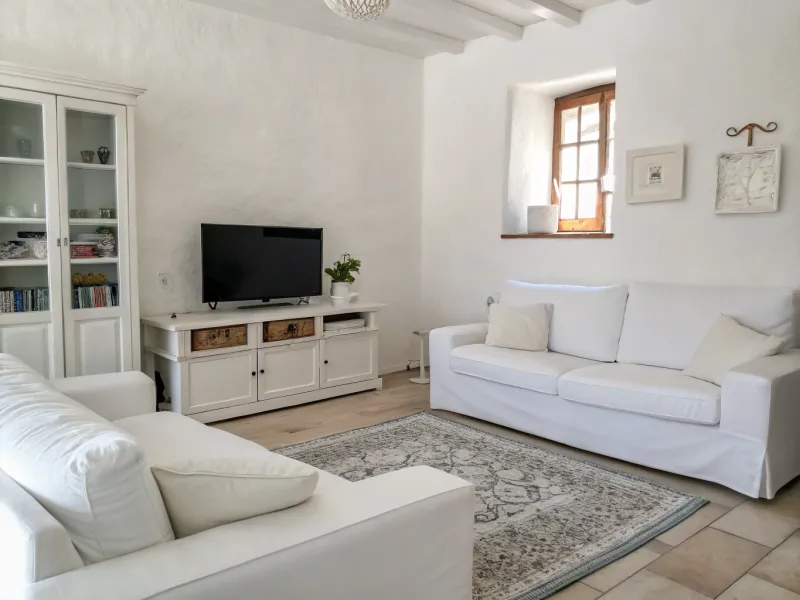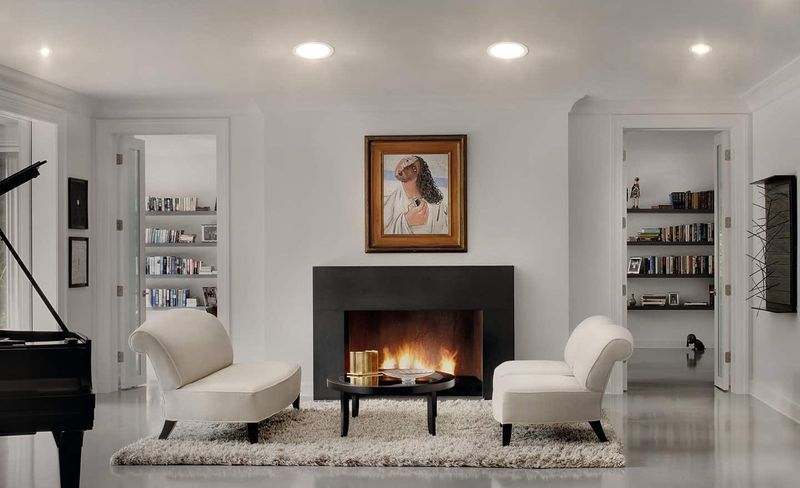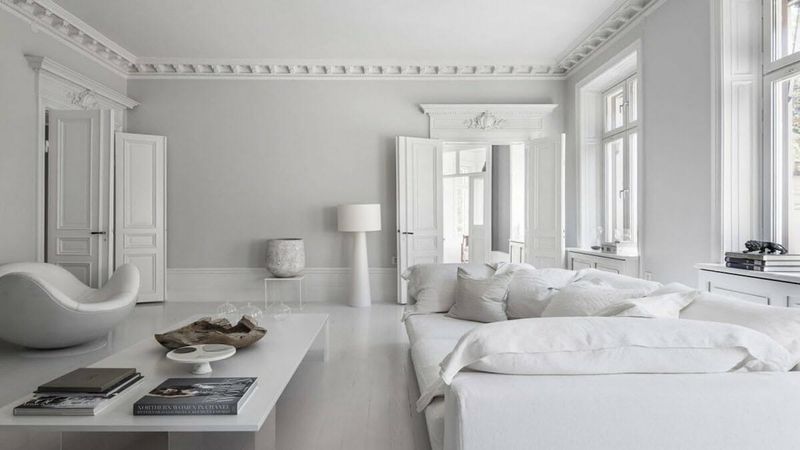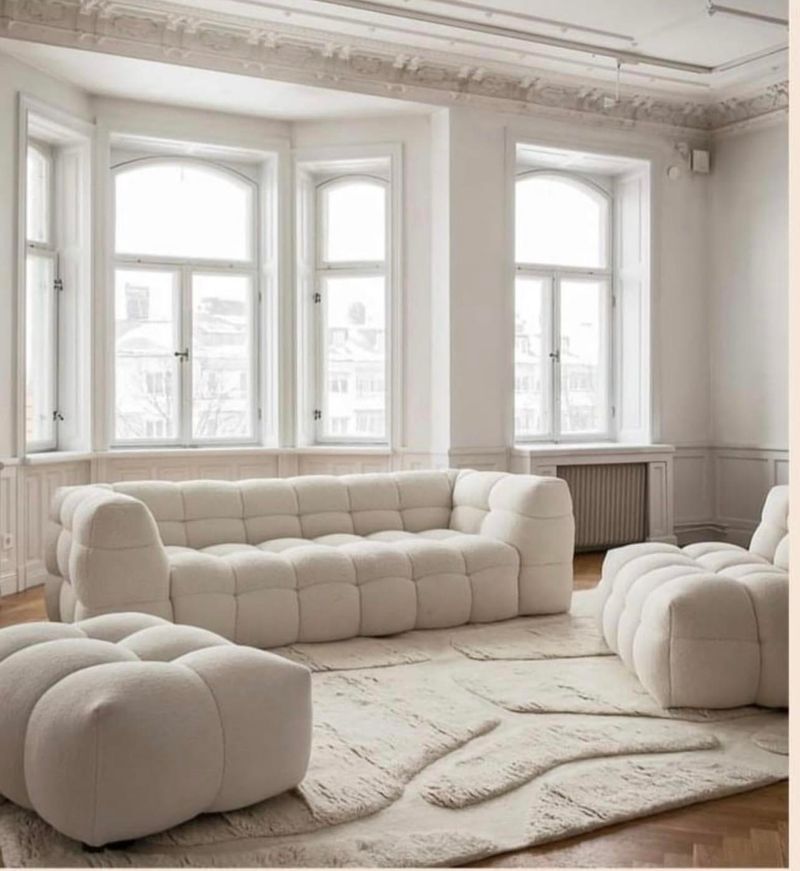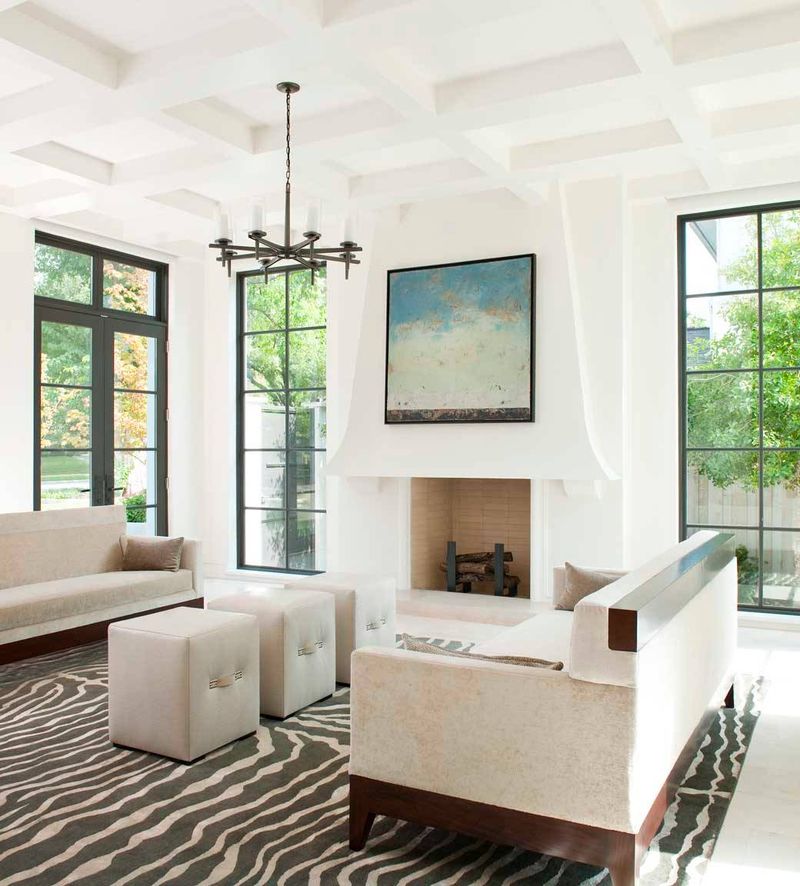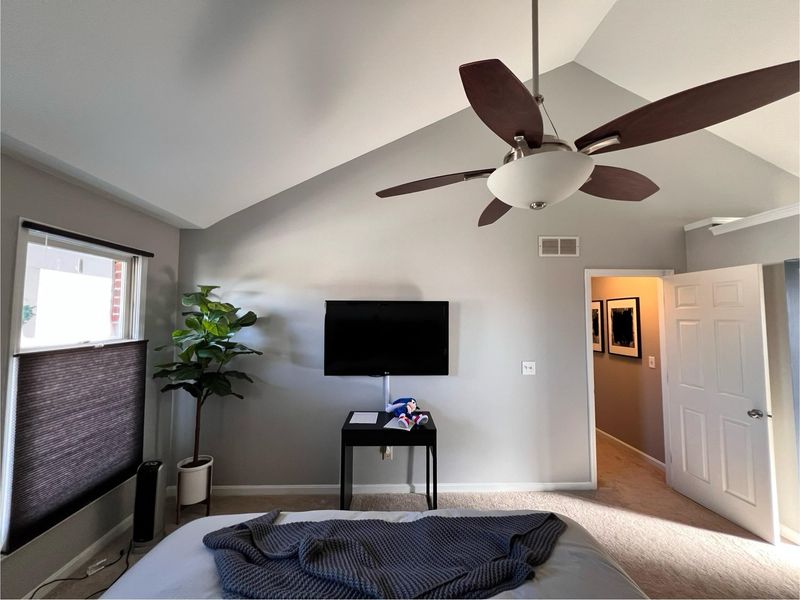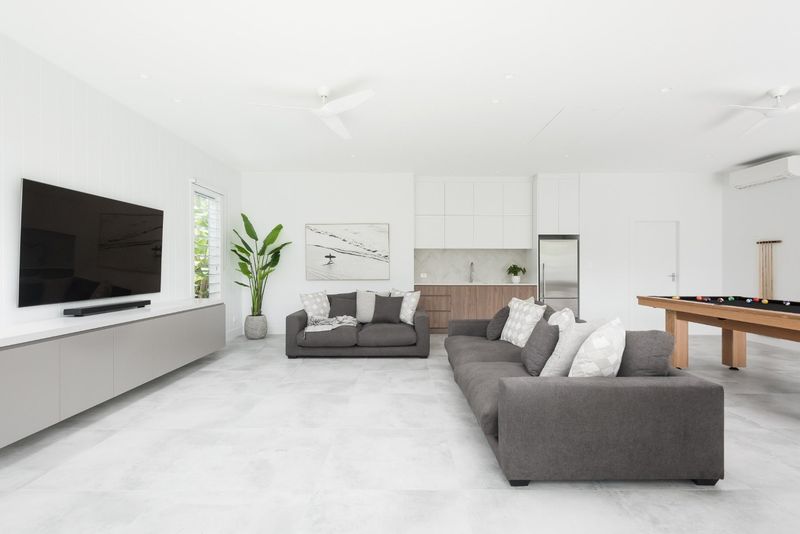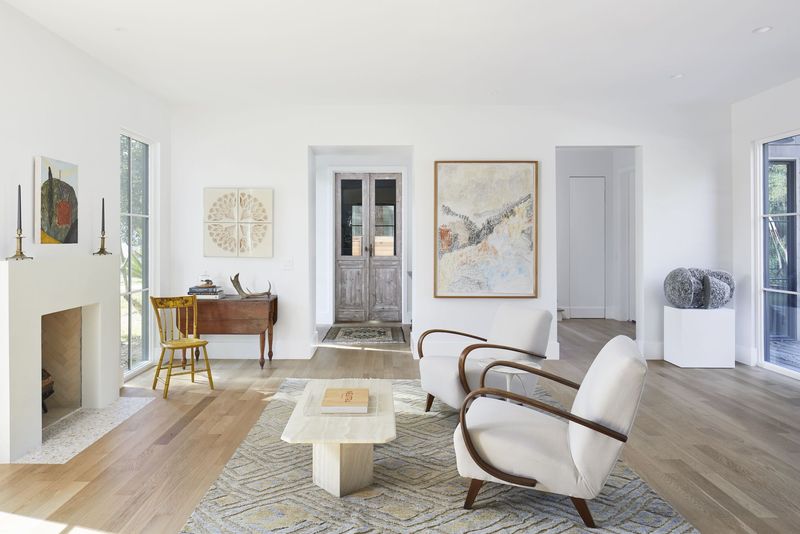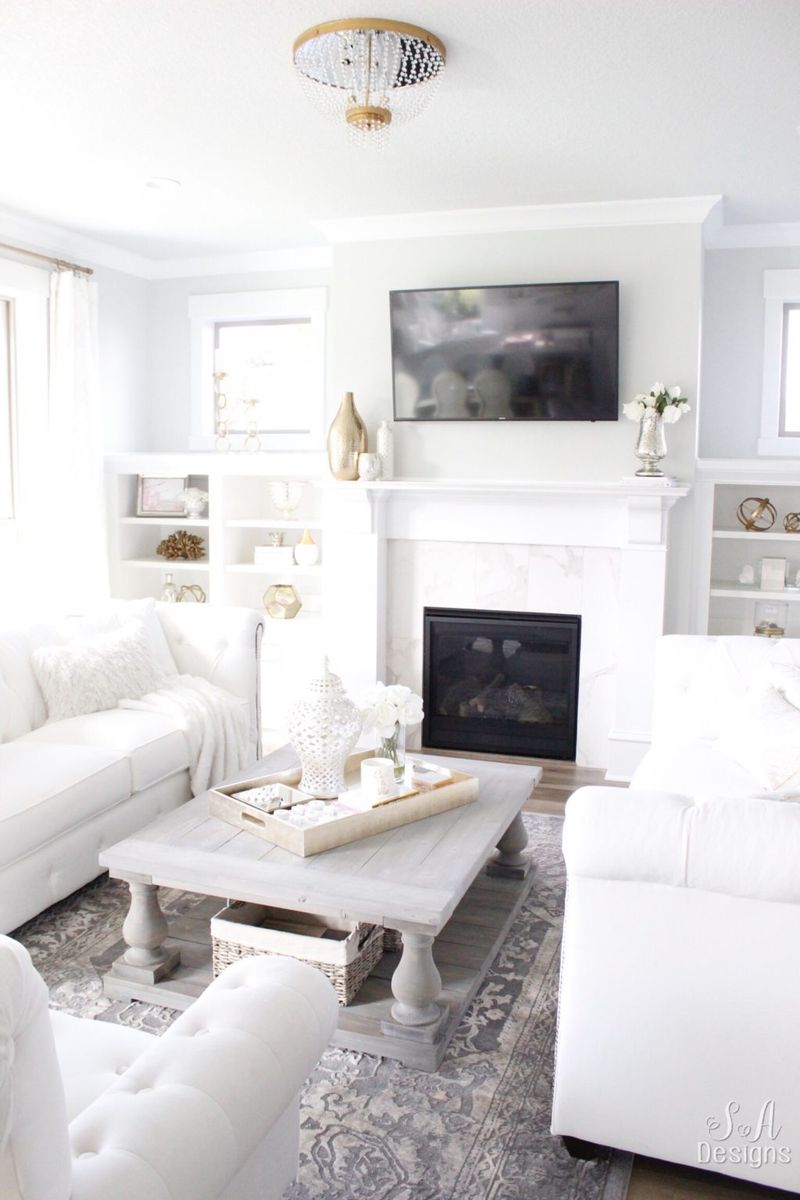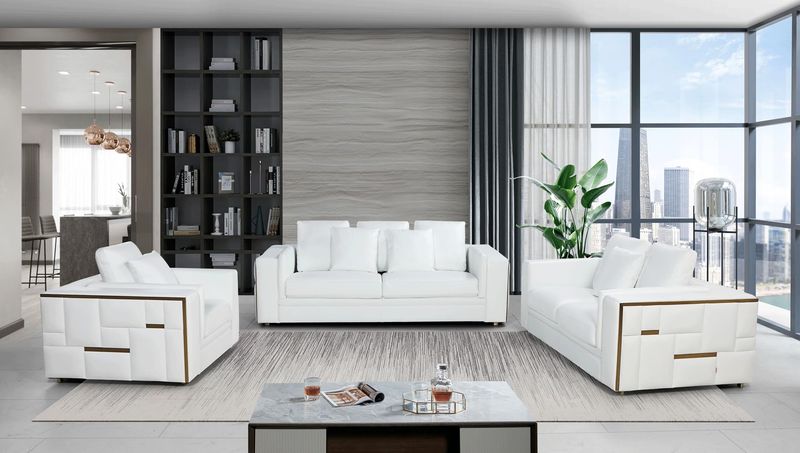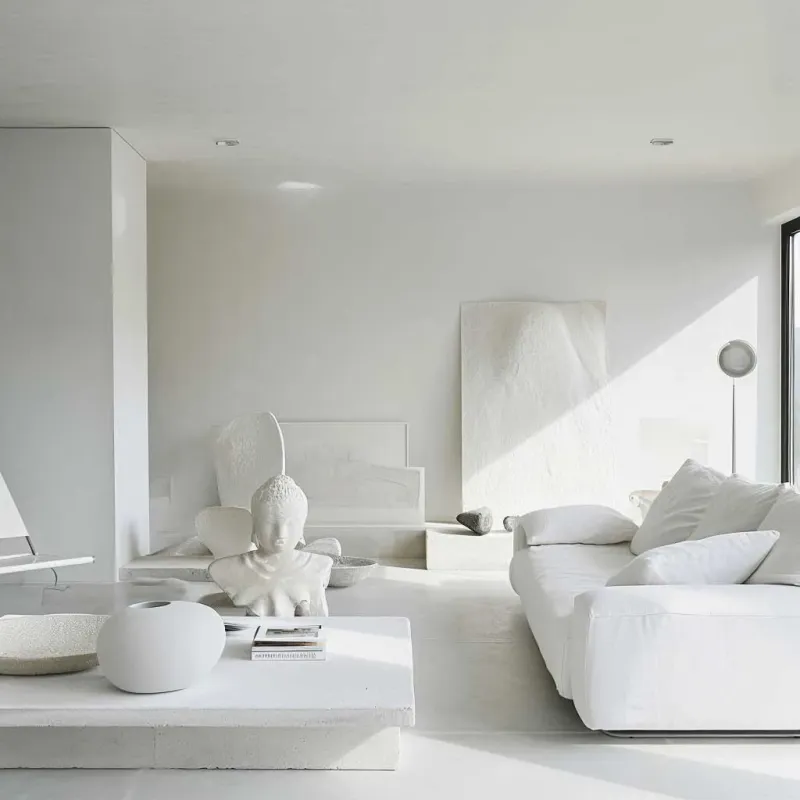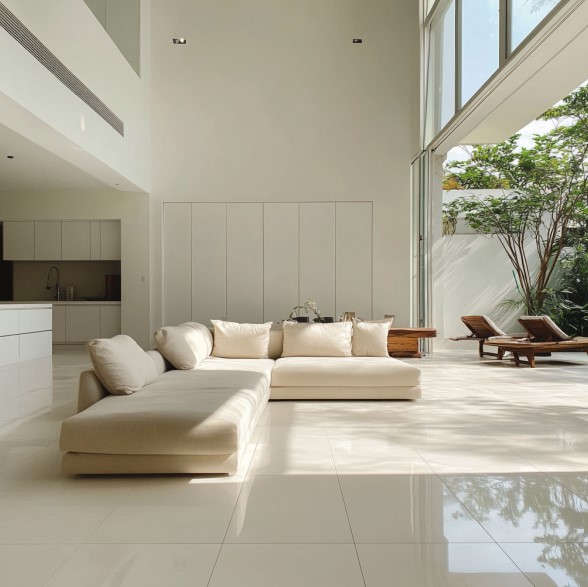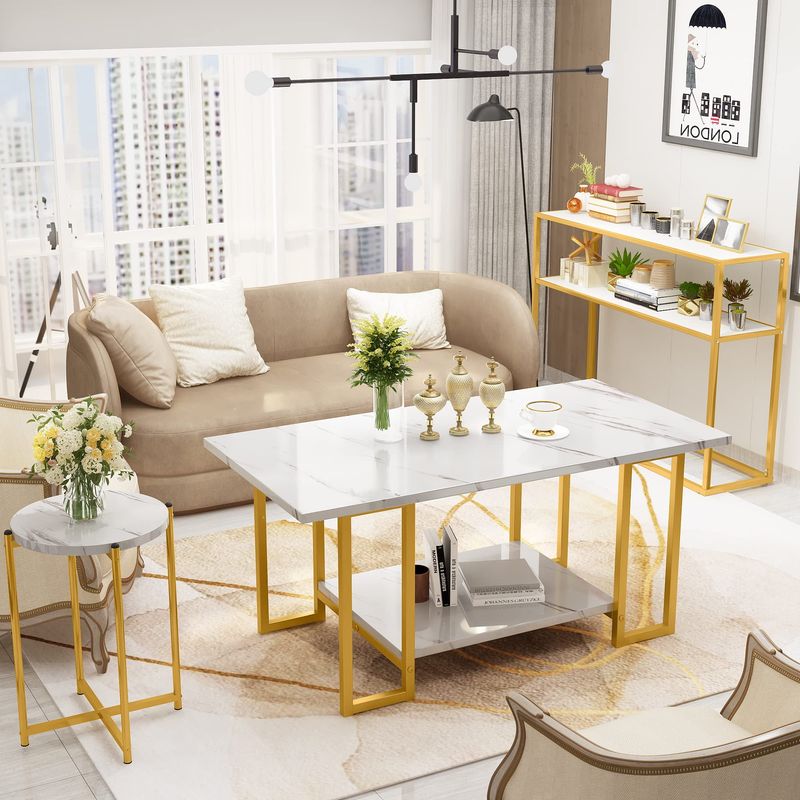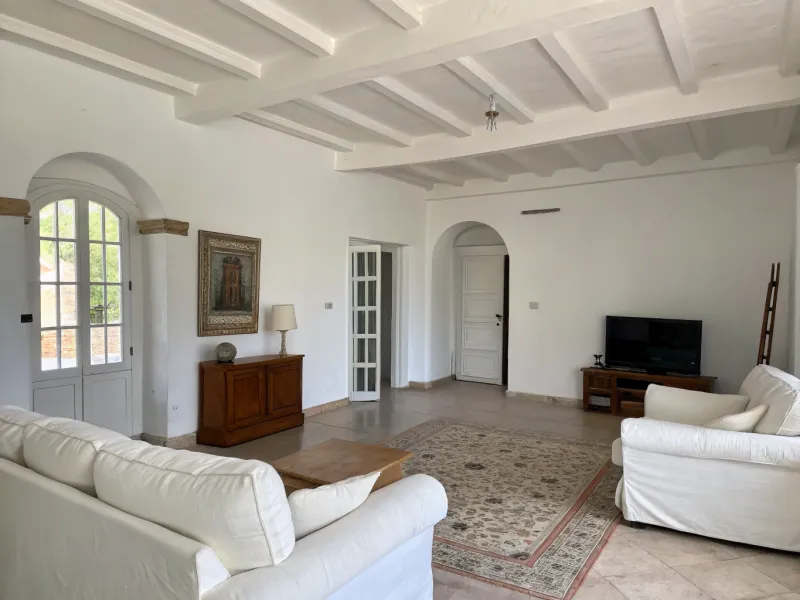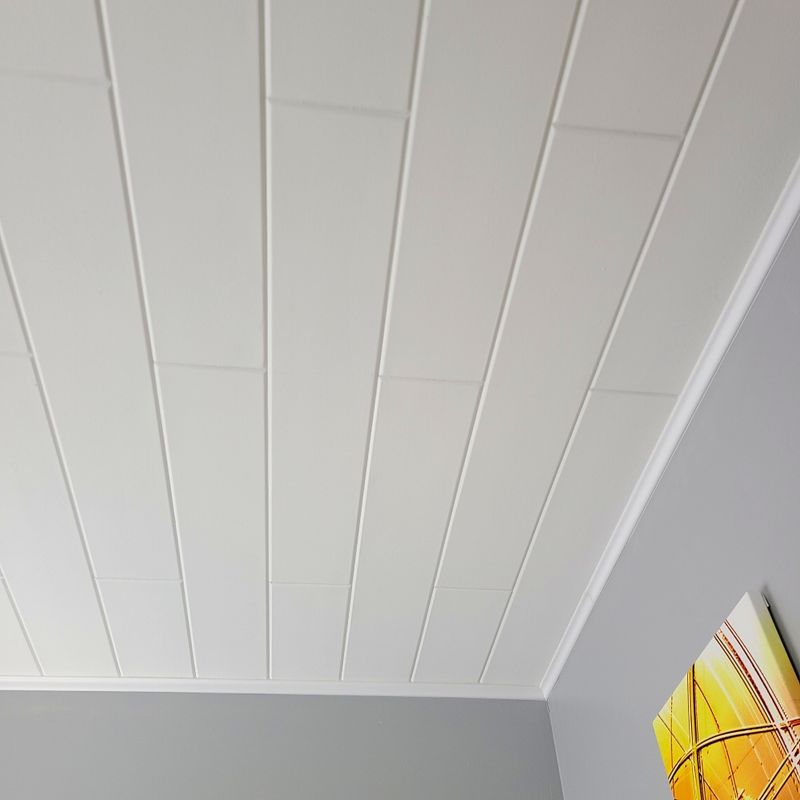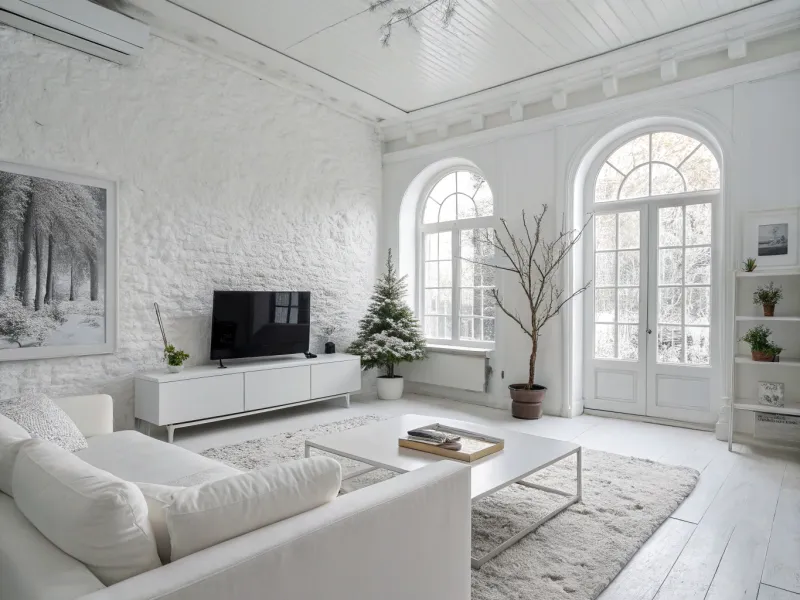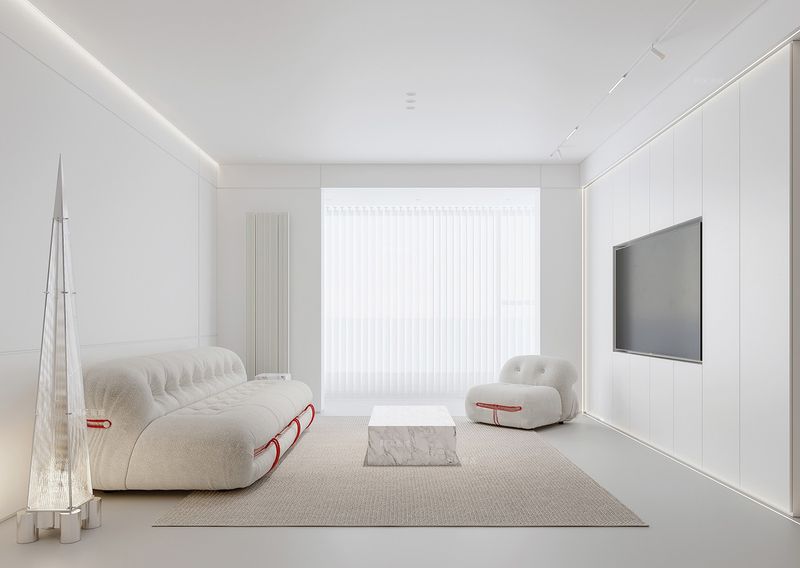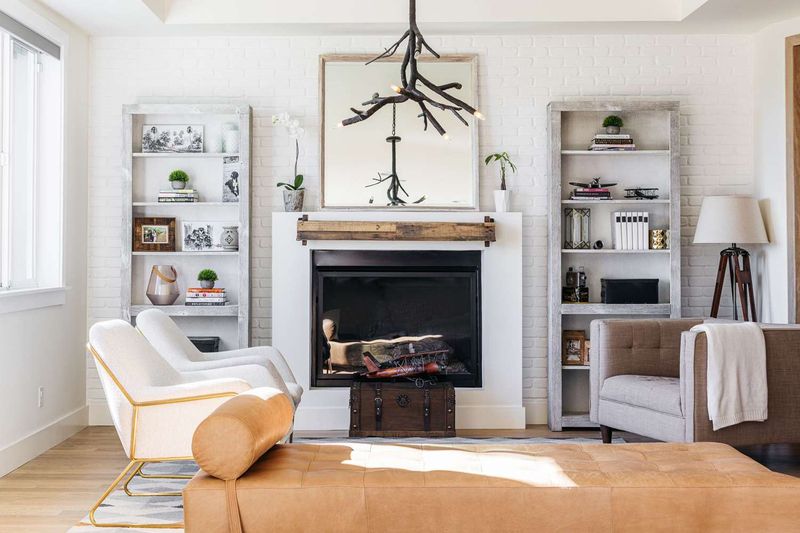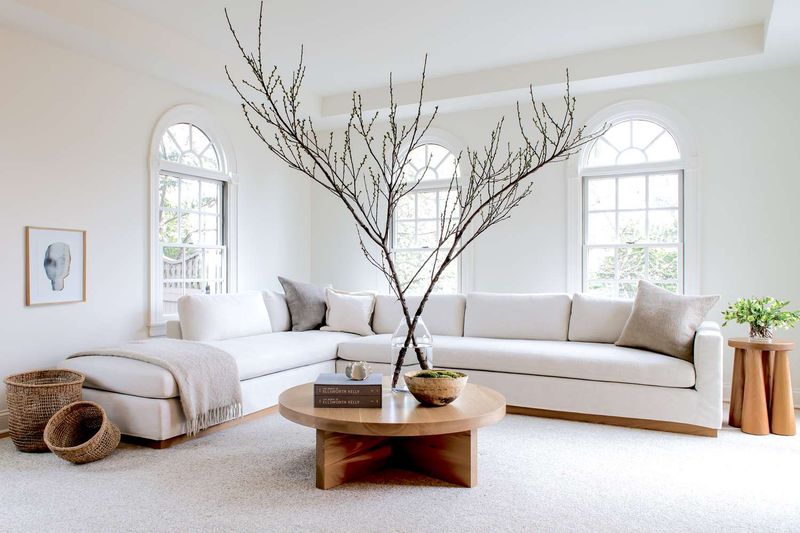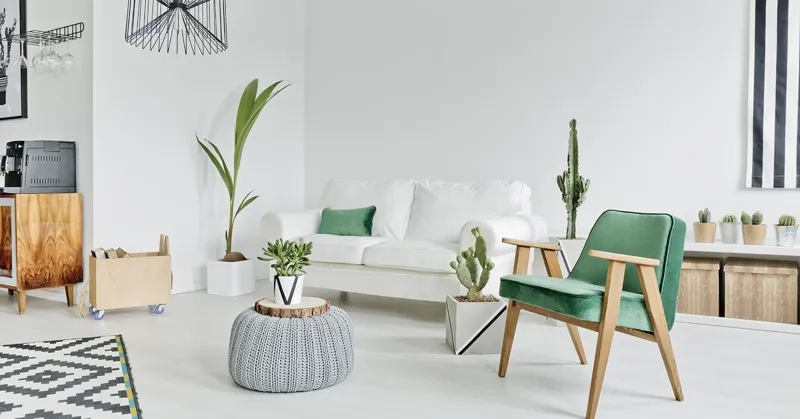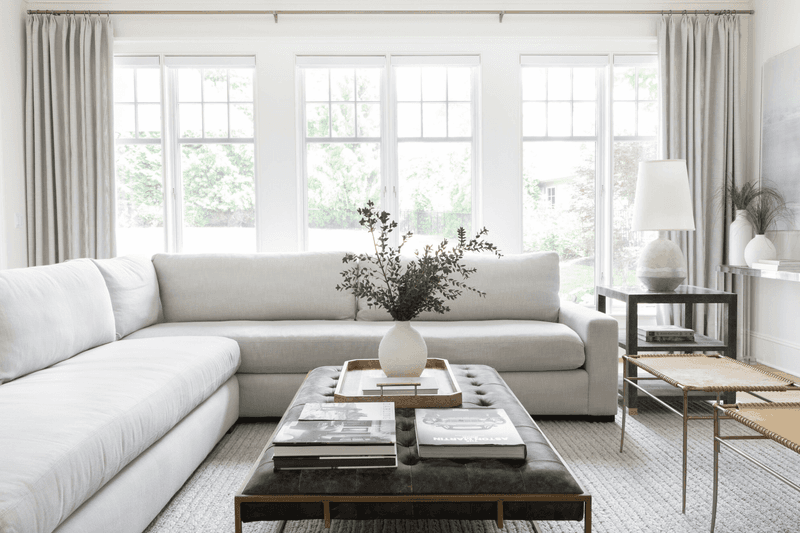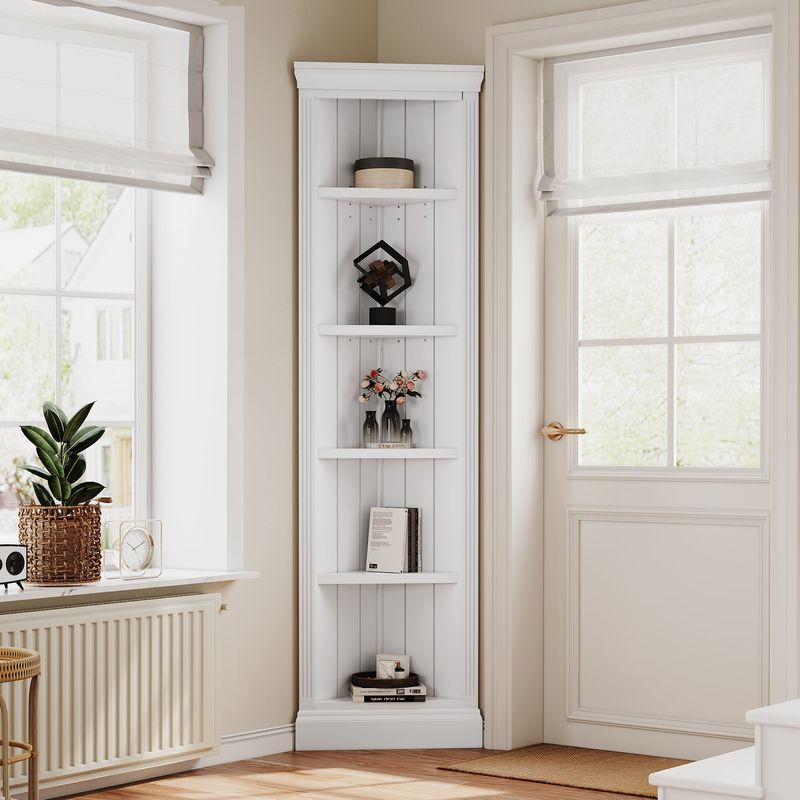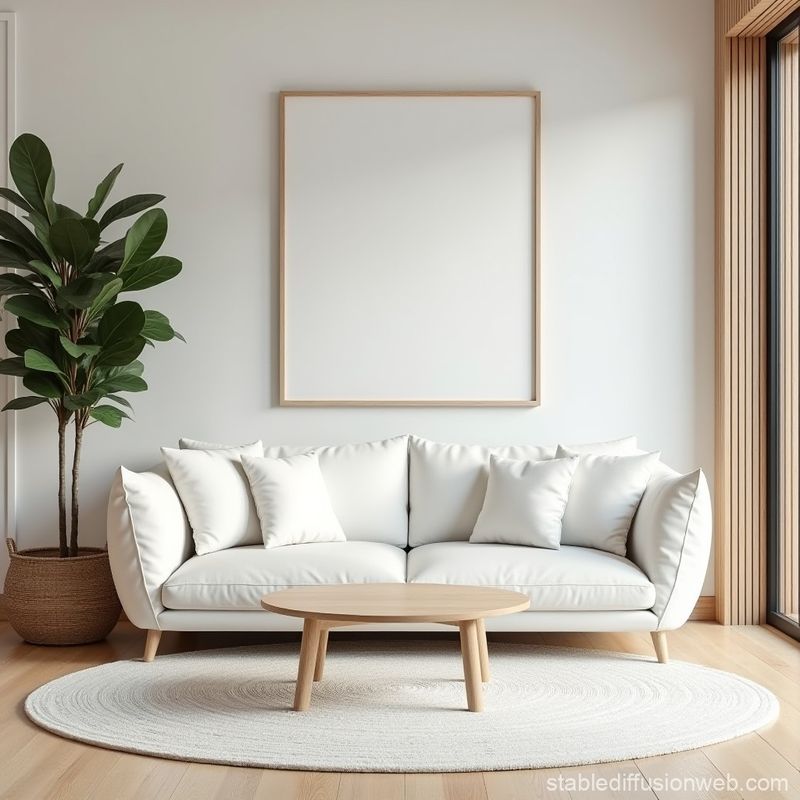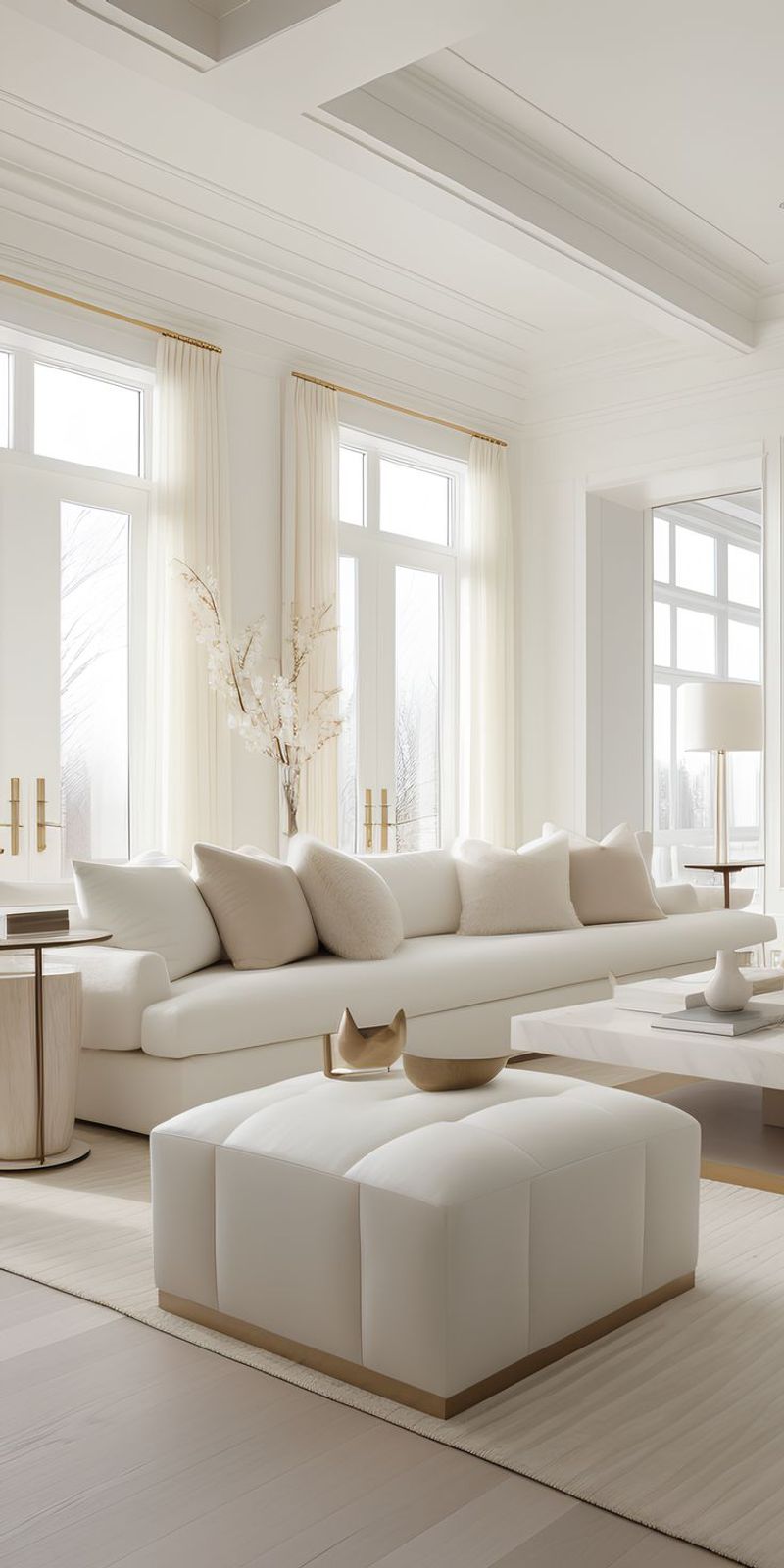A white living room can exude elegance and sophistication, but if not designed thoughtfully, it can also feel stark and unwelcoming.
The key to creating a warm and inviting white living room lies in avoiding certain common design mistakes.
In this article, I’ll share with you 25 mistakes you might be making if your space feels more like a showroom than a home.
1. Lack of Texture
White walls, white furniture, and white floors can make a room feel sterile without the right textures. Consider adding a plush rug, textured throws, or patterned cushions to break the monotony.
These elements help to create a cozy atmosphere and introduce depth to the space. By introducing various textures, you transform what could be a cold environment into one that feels warm and inviting.
2. Ignoring Lighting Warmth
Lighting plays a crucial role in defining the mood of a space. Opting for cool, harsh lighting can make a white room feel even colder.
Instead, choose warm, ambient lighting to soften the room’s appearance. Warm bulbs or layered lighting designs can add a welcoming glow, making your living room a place where people feel comfortable and relaxed.
3. Monochrome Overload
A room drowned in white can feel overwhelming and lack character. While white is a versatile color, overusing it without any contrast can lead to a bland space.
Introduce elements of color through artwork, plants, or accent furniture. These touches provide visual interest and prevent the space from feeling like a blank canvas.
4. Minimalist Furniture Only
While minimalist furniture is stylish, too much of it can leave a room cold and impersonal. Balance it with pieces that have character, like a vintage armchair or a textured coffee table.
These elements add personality and warmth to your living room, making it more inviting. A mix of styles can turn your space from stark to strikingly comfortable.
5. Bare Windows
Uncovered windows can leave a room feeling exposed and cold. Curtains or blinds not only offer privacy but also add warmth and texture.
Choose fabrics that complement the room’s decor while providing functionality. Layered window treatments can also add an element of depth, making your living room feel more cozy and complete.
6. Neglecting Wall Art
Bare walls can make a white room feel unfinished and sterile. Wall art introduces color, personality, and interest to the space.
Whether you choose bold paintings, subtle prints, or family photos, art can transform the look and feel of your living room. It adds warmth and a personal touch that makes the space uniquely yours.
7. Cold Flooring Choices
Cold flooring materials like tiles or marble can make a space feel unwelcoming. Adding a rug can instantly change the atmosphere of your room.
Choose a rug with a warm color or a cozy texture to balance the coldness of the floor. Rugs not only add comfort underfoot but also introduce layers to the room’s design.
8. Sparse Seating Arrangement
A sparse seating arrangement can make a room feel empty and uninviting. Include a variety of seating options to cater to different needs and gatherings.
Whether it’s a cozy loveseat or a set of armchairs, diverse seating encourages conversation and relaxation. This approach transforms your living room into a welcoming space for all.
9. Overlooking Indoor Plants
Plants bring life and color to any space, breaking the monotony of a white room. They act as natural decor, improving air quality while adding warmth and vibrancy.
Whether you choose large leafy plants or small succulents, greenery can transform your living room. Incorporating plants creates a balanced environment that feels both lively and serene.
10. Neglecting Personal Touches
Without personal touches, a room can feel generic and unwelcoming. Incorporate items that reflect your personality, like books, travel souvenirs, or family photos.
These elements add character and make your living room feel like home. Personal touches not only enhance the aesthetic appeal but also create a space that tells your story.
11. Choosing Stark Whites
Pure white can sometimes feel too stark and clinical. Opt for off-whites or warm whites to soften the look.
These shades maintain the elegance of white while adding a touch of warmth. Selecting the right shade can make a significant difference in how your living room feels, transforming it from cold to cozy.
12. Forgetting About Soft Furnishings
Soft furnishings like cushions, throws, and rugs add comfort and warmth. Without them, a white room can feel bare and unwelcoming.
Choose materials that are plush and inviting to enhance the room’s coziness. These elements are not only functional but also add layers and interest to your decor, making your living room a pleasant retreat.
13. Incorporating Too Much Metal
Metallic decor can add a modern touch but overdoing it can lead to a cold and industrial feel. Balance metal elements with softer materials like wood or fabric.
This combination can create a harmonious environment that feels both chic and welcoming. Mixing different textures prevents the space from feeling too stark or impersonal.
14. Ignoring Architectural Features
Architectural features like moldings or beams can add character and depth. Ignoring them can leave a room feeling flat.
Highlight these features with contrasting colors or textures to make them stand out. Emphasizing architecture adds unique charm, making your living room feel more dynamic and engaging.
15. Neglecting the Ceiling
The ceiling is often overlooked, but it plays a crucial role in room design. Leaving it plain can contribute to a cold atmosphere.
Consider adding texture, beams, or even a splash of color to the ceiling. These elements draw the eye upward and add interest, ensuring your living room feels complete and inviting.
16. Sticking to a Single Style
Adhering strictly to one style can make a room feel rigid and lifeless. Mixing styles adds warmth and character.
Incorporate elements from different design periods to create a more dynamic and inviting space. This approach allows your personality to shine through, making your living room uniquely yours.
17. Avoiding Natural Materials
Natural materials like wood and stone add warmth and texture. Relying solely on synthetic materials can make a room feel cold and artificial.
Incorporate natural elements to add depth and a sense of comfort. These materials bring a timeless quality to your decor, enhancing the inviting atmosphere of your living room.
18. Keeping Everything Symmetrical
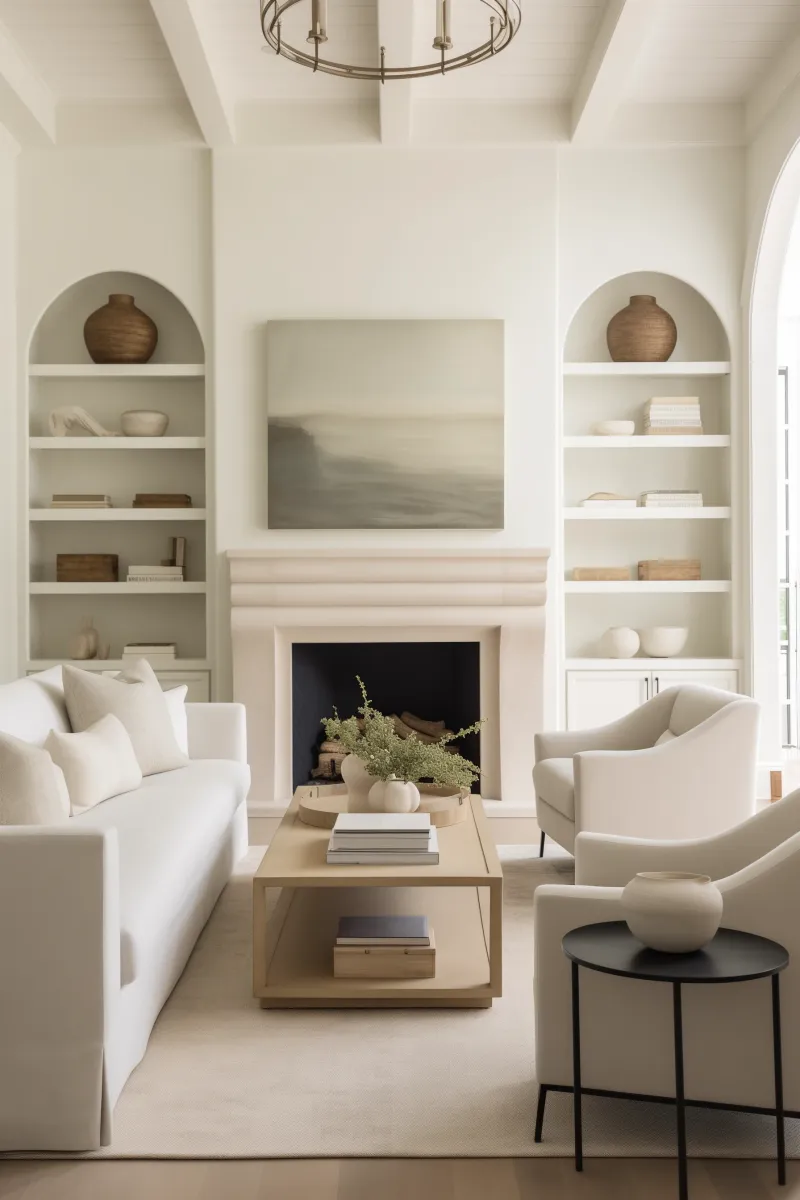
Symmetry can create balance, but too much can make a room feel staged and uninviting.
Add asymmetrical elements like an off-center artwork or an eclectic mix of cushions to inject personality. This approach adds a sense of spontaneity, making your living room feel more lived-in and welcoming.
19. Neglecting the Fireplace
A fireplace can be a focal point, offering warmth and charm. Leaving it unused or undecorated can miss an opportunity to cozy up the room.
Style your fireplace with logs, candles, or decor to enhance its appeal. This feature not only provides physical warmth but also adds an inviting visual element.
20. Too Much Open Space
Open spaces can feel overwhelming and cold if not utilized properly. Create zones with rugs, furniture, or screens to add intimacy.
Breaking up the space makes it feel more cozy and functional. This strategy helps in defining areas for specific activities, making the room more engaging and lively.
21. Plain White Walls
Plain white walls can make a room feel uninviting and sterile. Add interest with paint effects, wallpaper, or decorative panels.
These elements introduce texture and color, transforming the space from dull to dynamic. Personalizing your walls can make your living room feel warm and exciting.
22. Not Enough Layering
Layering is key to creating a warm and inviting space. Without it, a room can feel flat and uninspiring.
Use layers of different textures, colors, and patterns to add depth. This approach makes the space feel more dynamic and cozy, encouraging people to linger and enjoy the environment.
23. Overlooking Cozy Corners
Cozy corners offer a place of retreat and relaxation. Without them, a room can feel impersonal and cold.
Designate a corner with an armchair, a small bookshelf, or a reading lamp to create a personal nook. These areas add character and provide a welcoming spot to unwind.
24. Sparse Decorative Elements
Decorative elements like vases, sculptures, or trinkets add charm and warmth. A lack of them can leave a room feeling bare and impersonal.
Incorporate a variety of decor to express your style and interests. These details make the living room feel complete and more inviting.
25. Choosing the Wrong Furniture Scale
Furniture that’s too large or small can disrupt the flow of a room. Oversized pieces can make it feel cramped, while too-small items can leave it feeling empty.
Choose furniture that fits the scale of your living room to maintain balance. This ensures a functional and aesthetically pleasing space.

